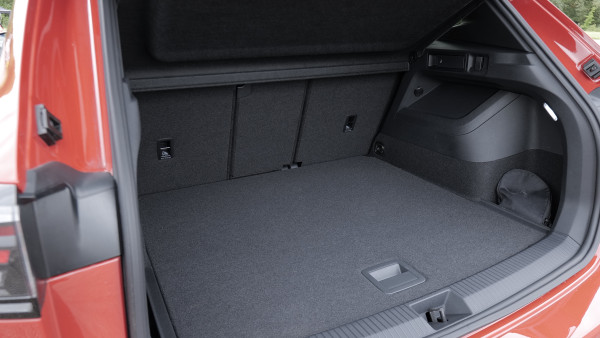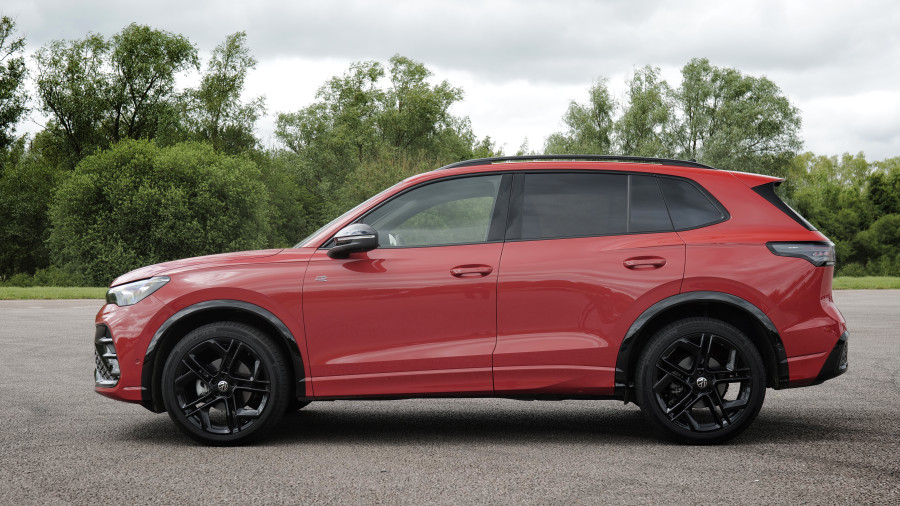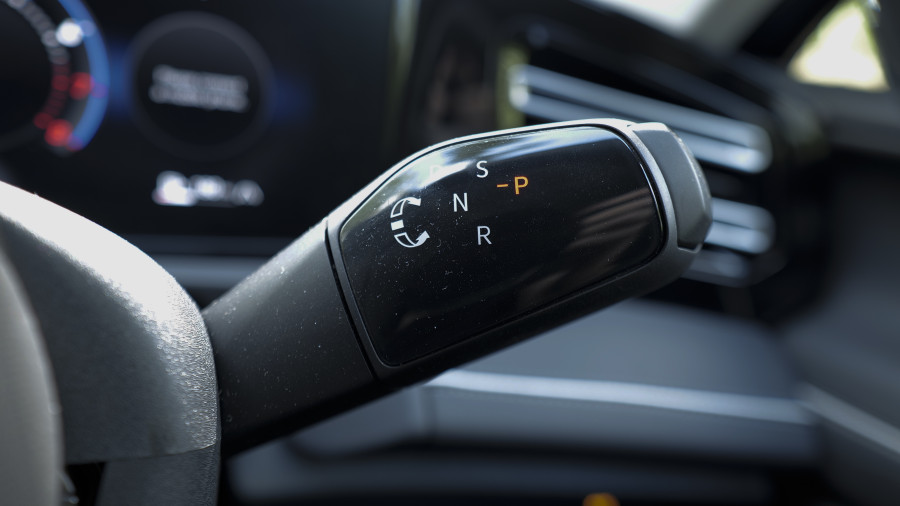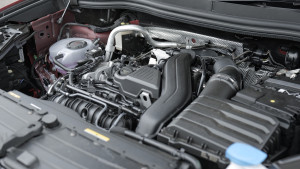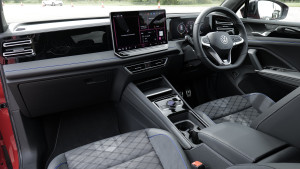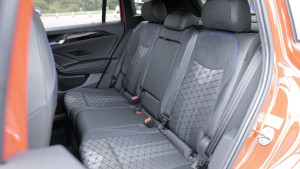Volkswagen's new generation Tiguan eHybrid offers a much improved PHEV package, thinks Jonathan Crouch
Ten Second Review
Volkswagen's Tiguan eHybrid uses the mow much improved VW Group PHEV powertrain to deliver a 60 mile all-electric driving range and lots of e-drive options. It's the same sort of thing obvious volume brand mid-sized SUV plug-in competitors offer, but here, the technology's delivered with a bit more polish. In short, there's lots to like if you don't mind the premium pricing.
Background
The Tiguan eHybrid didn't arrive until 2020. For years prior to that, the brand teased us with a Tiguan GTE prototype with a clever roof-mounted solar module. The final production version lacked that -and couldn't be had with 4WD or a particularly long EV drive range. With the MK3 Tiguan range, that latter issue's been addressed thanks to the new 1.5-litre powertrain enabled by this SUV's redeveloped MQB evo platform.
Like other MK3 Tiguans, this one has a far more digitalised cockpit - and a near-premium price tag. Is it worth it? Let's take a closer look.
Driving Experience
Unlike its rivals, Volkswagen still hasn't got around to designing a Plug-in Hybrid powertrain that can drive all four wheels - perhaps another reason why the TDI diesel version's still hanging around. The eHybrid Tiguan now uses a slightly larger 1.5-litre engine and there are now two versions of it, with either 204PS or 272PS. The key change though, is that both now get a far larger 19.7kWh battery (up from 13.0kWh before), which has nearly doubled EV drive range to 60 miles, enough, Volkswagen reckons, to allow most families to use a Tiguan eHybrid much like an EV.
You won't get anywhere close to that EV range figure of course if you use all the performance on offer: the 204PS version makes 62mph in 8.2s en route to 130mph; for the 272PS variant, it's 7.2s and 134mph. As with the old Tiguan eHybrid, there's a 6-speed DSG auto gearbox to replace the 7-speed DSG auto used in the conventionally-engined models.
The car always starts off in fully-electrified 'E-Mode', before switching to a 'Hybrid' mode that sees the electric motor and the combustion engine combining together. As part of this setting, you've also a 'Battery Hold' option that will save battery charge until later in your trip; and a 'Battery Charge' setting (in which the battery will be charged as you drive by the TSI engine). There's also a press-on engine-only mode - which you'll need to replicate the 0-62mph times quoted - 8.2s or 7.2s, depending on variant.
Design and Build
Unless you spot the extra charging flap or the distinct badging, you're unlikely to notice that this eHybrid variant is different from any other Tiguan. This third generation Tiguan is a recognisable evolution of its popular predecessor but it wants to move a fraction further up-market, hence Volkswagen's decision to make it 30mm longer than before (it's also 4mm taller).
The big differences this time round though, lie inside where there's a completely redesigned cabin that's more spacious, better quality and more sophisticated. All the screen stuff is based on the new VW Group MIB4 set-up we first saw in the ID.7, a major step forward from the MIB3 system that's attracted much criticism in the current Golf. The parts of that old system that featured on the previous Tiguan have been addressed here. So controls are now properly back-lit and the previous silly touch-sensitive steering wheel buttons banished.
A 10.3-inch digital instrument display is now standard, paired alongside a central infotainment touchscreen that will usually be 12.9-inches but can be upgraded to a rather over-large 15.0-inch size on request. The centre console has been redesigned and now hosts a rotary controller used to alter driving modes, audio volume and what Volkswagen calls 'atmospheres', basically pre-programmed settings for music and ambient lighting. The seats are supportive and there's plenty of cabin storage space. Plus there's now a dual phone charging station and a head-up display that projects directly onto the windscreen (instead of onto a plastic panel as before). The second row still has a sliding bench. And out back, there's 490-litre boot (162-litres less than an ordinary Tiguan but 109-litres more than the previous generation eHybrid model).
Market and Model
We expect Tiguan eHybrid pricing to start at around £42,000 - not much less than the brand's ID.4 full-EV. You do at least get decent equipment levels for that, particularly with the plusher 'Elegance' and 'R-Line' spec options that most Tiguan eHybrid customers will choose.
'Elegance'-spec features include 19-inch 'Catania' alloy wheels with black diamond-turned surface, chrome mouldings on the side windows, heated washer jets and an illuminated light line between the headlights. Plus there's are heated ergoActive 14-way power-adjustable sports 'comfort' front seats with a massage function; and an interior ambient lighting system with 30 colour options. At this level in the range, you also get a powered tailgate, an area view camera system and keyless entry. There's also Volkswagen's 'Travel Assist' system which provides for a degree of semi-autonomous driving - a camera and radar sensor-controlled assistance system that will autonomously accelerate, brake and steer your Tiguan while maintaining a safe distance to vehicles ahead.
Similarly priced at the top of the range is the 'R-Line' trim level, which is specced much like an 'Elegance' variant but is set apart by 20-inch 'Leeds' alloy wheels with a black and grey diamond-turned surface and 'R-Line' sports-style bumpers. Inside, 'R-Line' trim gives you brushed stainless steel pedals and upholstery in 'Greyson' velour with bolsters in 'ArtVelours'.
Cost of Ownership
That range extension of course dramatically affects the efficiency figures, which as usual with a PHEV, mainly show how ineffectual the current WLTP ratings cycle is in measuring the true frugality and cleanliness of a Plug-in Hybrid. In 204PS form, a Tiguan eHybrid is rated at up to 706.2mpg on the combined cycle; in faster 272PS guise, it's supposed to be up to 565mpg. In reality, if you keep the car fully charged, its frugality will probably be somewhere close to what a careful owner would get in a diesel-powered model. Where you will get discernible benefit from the fantasy land stats though is of course when it comes to CO2, with super-low ratings that'll reduce your Benefit-in-Kind tax payments to near-EV levels.
The 204PS model is measured at just 9g/km; with the 272PS variant, it's 11g/km. A Tiguan eHybrid would go over 620 miles between fuel stops so, for example, you could travel from London to Paris and back without refuelling. Its battery can now be charged at a home wallbox at up to 11kW - a more common 7.4kW wallbox needs around three and a half hours for a full charge; it'd be about five hours from a domestic plug. Out and about, your Tiguan eHybrid can now be DC-charged at up to 50kW.
Summary
It's puzzling why Volkswagen doesn't offer a non-plug-in full-Hybrid self charging version of this Tiguan, but if you can stretch to this PHEV variant, you'll now find it hugely improved. This powertrain will now make so much sense to the sensible conservative folk who tend to like this uber-sensible Wolfsburg mid-sized SUV.
It's now a real alternative to that mid-sized EV you might have been thinking about - and it feels classier inside than most of its PHEV crossover segment rivals. Yes, you could get a more avant garde cabin by opting for a mechanically very similar CUPRA Formentor eHybrid but that car won't appeal much to the typical Tiguan crowd. Who, we think, will like this Plug-in Hybrid model very much indeed.

